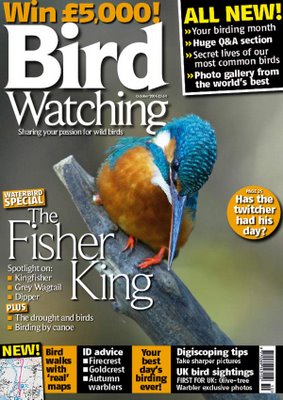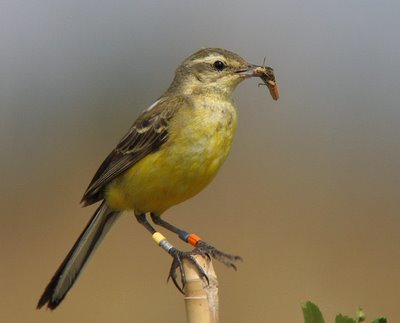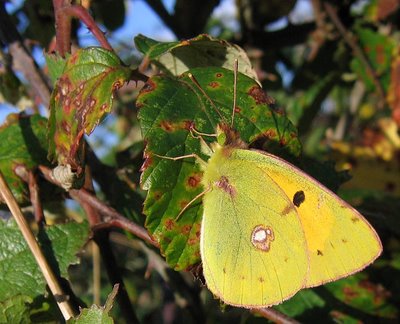
In the latest, new-look Bird Watching magazine (available now!), I have been given my own monthly column, called Weedon's World (well it is better than the Weedon Patch, if you know what I am saying). Here, in its entirety is October's copy, which is all about the Yellow Wagtails I was watching at Maxey pits in August. Want to see more of the mag (including horibble shots of my grinning face)? Buy it! Want to subscribe? try:
Bird Watching Mag subscriptions
Every year, I ride the ferry a few times between Portsmouth and Bilbao. Whales and dolphins are the main targets and highlights, and shearwaters and petrels a welcome bonus. But, on each trip, it is always the small birds which are the most amazing sight. Stuck out in the middle of the Bay of Biscay, hundreds of miles from land, tiddly perching birds pass you by or land on the ship.
This is migration in action, tiny birds taking a mighty risk, crossing a mass of sea to get to where the weather is good and the food supply will get them through the winter. We birdwatchers all know that migration happens, but being in the middle of a watery wilderness, witnessing it first hand really brings it home. Warblers, pipits, swallows and wagtails dominate the passage.
Riding the ocean waves gives you space to think: where do these gritty little birds end up? How many survive? Will they ever return north to breed in Britain? Many, such as the Yellow Wagtails, end up in sub-Saharan Africa. A friend who’d been birding in Ethiopia describes fields where literally thousands of Yellow Wagtails of every conceivable race gather and mix together, communicating with the ancient wagtail language of Babel (variations of ‘schweeep’), before they head off to their single-race breeding grounds.
Among them are our birds, the largely British flavissima, the ‘most yellow’ Yellow Wagtails. In April, UK birders smile as they hear the first ‘schweeep’ of spring, heralding the Yellow Wagtails returning to their patch. They’re here for summer and vanish in autumn. We take them for granted.
In mid-August, I was doing just that, wandering around a local Cambridgeshire gravel pit looking for dragonflies and ignoring the Yellow Wagtails. That is until one came and landed on a bamboo stick a few yards from where I was standing, inviting a wee bit of digiscoping. It was an adult female, carrying in its bill a legless, wingless grasshopper and it seemed to want to come and feed its young – perhaps a second brood.
The prey made for nice shots (above), but the bird’s legs were colour-ringed, which isn’t exactly aesthetically pleasing. When I got home, I thought about checking out the pattern of colour rings and reporting it. But, as I looked at the images, I also found that I could read a few of the numbers of the BTO metal ring: “8623”. Using the colour-rings and my bit of number, Guy Anderson of the RSPB identified my wagtail as P886234, a bird which was ringed as a chick in 2003, about eight miles from where it was now raising its own family.
This bird, weighing perhaps 17g, and only 15cm from bill tip to tail tip, had flown thousands of miles to Africa three times and had flown back to the UK three times. If seeing the birds cross Biscay wasn’t enough of a wake-up call, this was a real slap-in-the-face and bucket-of-water in one. This flimsy little passerine was one tough bird.
As you enjoy October’s passage, think about the death-defying madness of migration our millions of migrants will face – and wish them luck.
■ If you find a colour-ringed or colour-tagged bird, please report the details to the Euring website:
www.euring.org




